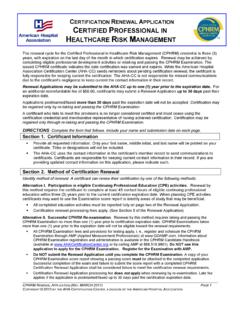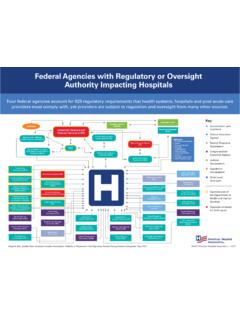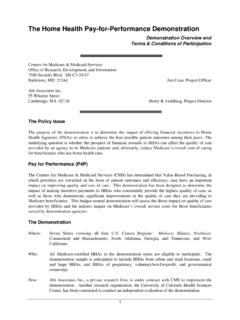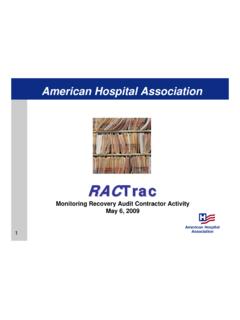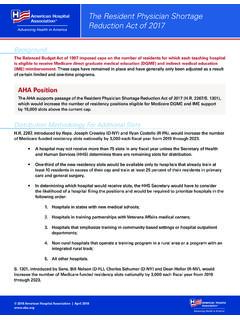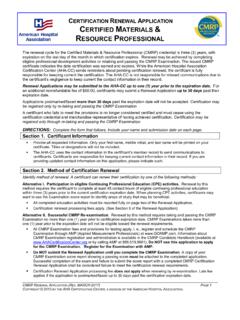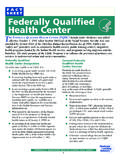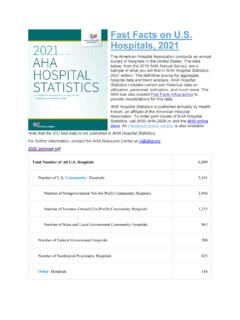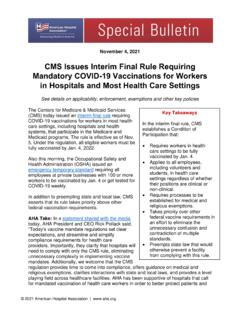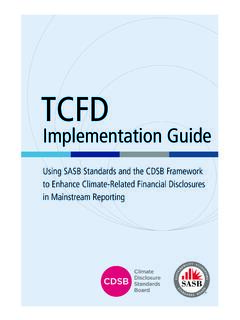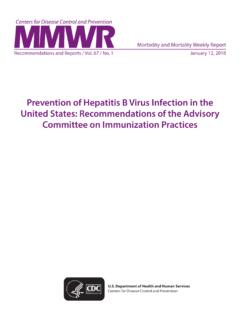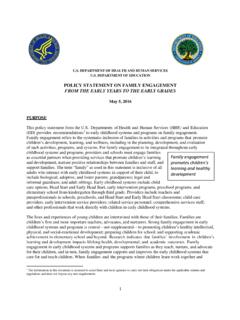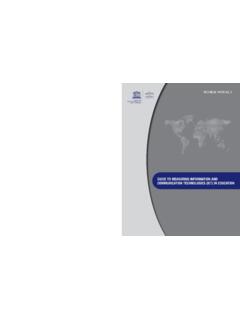Transcription of Regulatory Overload - American Hospital Association
1 Regulatory OverloadAssessing the Regulatory Burden on Health Systems, Hospitals and Post-acute Care ProvidersOctober 2017 Analytics and research support provided byRegulatory Overload : Assessing the Regulatory Burden on Health Systems, Hospitals and Post-acute Care Providers Table of ContentsExecutive SummaryI. IntroductionII. Research Scope and MethodologyIII. Assessing the Impact of Regulatory Compliance on Providers and PatientsA. Nationally, health systems, hospitals and PAC providers spend nearly $39 billion on the administrative aspects of Regulatory Physicians, nurses and allied health staff make up over one-quarter of the FTEs dedicated to Regulatory compliance, pulling clinical staff away from patient care Documenting conditions of participation adherence and billing/coverage verification processes are the most burdensome of the nine domains.
2 Hospital CoPs Billing and coverage verification requirementsD. Quality reporting requirements are often duplicative and have inefficient reporting processes, particularly for providers participating in value-based purchasing models. Quality reporting requirements create duplication of effort and inefficiency, with unknown patient benefit. The quality reporting burden is magnified by participation in new models of care/value-based purchasing Fraud and abuse requirements are outdated and have not evolved to support new models of care, in some cases compromising access to Meaningful use has spurred provider investment in IT systems.
3 But exorbitant costs and ongoing interoperability issues increase provider The timing and pace with which regulations are released make Regulatory compliance challenging and generate additional A Starting Place for SolutionsV. ConclusionAppendix A Regulatory Program DescriptionsAppendix B Survey Methodology37912131414151618181920222425 2728303 Every day, health systems, hospitals and post-acute care (PAC) providers such as long-term care hospitals, inpatient rehabilitation facilities, skilled nursing facilities and home health agencies confront the daunting task of complying with a growing number of federal regulations.
4 Federal regulation is largely intended to ensure that health care patients receive safe, high-quality care. In recent years, however, clinical staff doctors, nurses and caregivers find themselves devoting more time to Regulatory compliance, taking them away from patient care. Some of these rules do not improve care, and all of them raise costs. Patients also are affected through less time with their caregivers, unnecessary hurdles to receiving care and a growing Regulatory morass that fuels higher health care quantify the level and impact of Regulatory burden, the American Hospital Association (AHA) worked with Manatt Health on a comprehensive review of federal law and regulations in nine Regulatory domains from four federal agencies (see box).
5 The study included interviews with 33 executives at four health systems, and a survey of 190 hospitals that included systems and hospitals with PAC Findings1. Health systems, hospitals and PAC providers must comply with 629 discrete Regulatory requirements across nine include 341 Hospital -related requirements and 288 PAC-related requirements. The four agencies that promulgated these requirements the Centers for Medicare & Medicaid Services (CMS), the Office of Inspector General (OIG), the Office for Civil Rights (OCR) and the Office of the National Coordinator for Health Information Technology (ONC) - are the primary drivers of federal regulation impacting these providers.
6 However, providers also are subject to regulation from other federal and state entities which are not accounted for in this Overload : Assessing the Regulatory Burden on Health Systems, Hospitals and Post-acute Care Providers executive SummaryProviders are dedicating approximately $39 billion per year to comply with the administrative aspects of Regulatory compliance in these systems, hospitals and PACproviders spend nearly $39 billion a yearsolely on the administrative activitiesrelated to Regulatory compliance in thesenine average-sized community Hospital (161beds)
7 Spends nearly $ million annuallyon administrative activities to supportcompliance with the reviewed federalregulations that figure rises to $9 million forthose hospitals with PAC beds. Nationally,this equates to $ billion each year tocomply with the administrative aspectsof Regulatory compliance in just thesenine domains. Looked at in another way, Regulatory burden costs $1,200 every time apatient is admitted to a average size Hospital dedicates timing and pace of Regulatory change make compliance frequency and pace with which regulations change often results in the duplication of efforts andsubstantial amounts of clinician time away from patient care.
8 As new or updated regulations areissued, a provider must quickly mobilize clinical and non-clinical resources to decipher the regulationsand then redesign, test, implement and communicate new processes throughout the the nine areas investigated, providers dedicate the largest proportion of resources todocumenting CoP adherence and billing/coverage verification two-thirds of FTEs associated with Regulatory compliance are within these two domains, whichalso represent 63 percent of the total average annual cost of Regulatory use has spurred provider investment in IT systems, but exorbitant costs andongoing interoperability issues , the average-sized Hospital spent nearly $760,000 to meet MU administrative requirementsannually.
9 In addition, they invested $411,000 in related upgrades to systems during the year, over larger than the information technoloty (IT) investments made for any other domain. Regulatorycompliance has required extensive investment in health IT systems and process reporting requirements are often duplicative and have inefficient reporting processes,particularly for providers participating in value-based purchasing average-sized community Hospital devotes FTEs over half of whom are clinical staff andspends approximately $709,000 annually on the administrative aspects of quality reporting.
10 Duplicative4 Scope of Regulatory Burden StudyThis report assesses the administrative impact that existing federal regulations from just four agencies CMS, OIG, OCR and ONC have on healthsystems, hospitals and post-acute care providersacross nine reporting; models of care/value-based paymentmodels; use of electronic health records; conditions of participation (CoPs); integrity; and abuse; and security; care; andFTEs to Regulatory compliance, over one- 9. Billing and coverage verification requirements.
